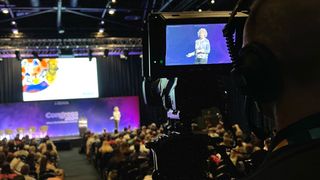Mastering the Craft of Seamless Film Mapping on Arched Monitor for Breathtaking Visual Experiences
Mastering the Craft of Seamless Film Mapping on Arched Monitor for Breathtaking Visual Experiences
Blog Article
Film projection is an exciting technique that allows visuals and footage to be projected onto areas, creating breathtaking visual experiences. When it comes to curved areas, perfecting this art can be a bit more challenging than casting onto flat planes. Curved surfaces can encompass anything from the sides of buildings to art pieces and even platforms. Grasping how to effectively map footage onto these forms is essential for artists, designers, and occasion organizers who want to develop immersive environments that captivate viewers.
The initial phase in video mapping on curved areas is to understand the shape of the area. Rounded surfaces can be complex, with varying degrees of bend. To attain a seamless projection, it is vital to build a 3D model of the surface. This model helps in visualizing how the video will look when cast. Software tools are accessible that permit users to create these models and mimic the projection. By precisely aligning the measurements and contours of the surface, creators can guarantee that the footage aligns perfectly without distortion.
Once the 3D model is prepared, the next step is to edit the footage content. This involves modifying the footage to suit the particular form and dimensions of the look at this website rounded area. It is crucial to consider the angles and viewpoints from which the viewers will observe the display. The content should be designed to improve the aesthetic encounter, making it captivating and pertinent to the theme of the event or installation. Using premium visuals and animations can significantly enhance the total effect of the projection.
After editing the material, the real display process begins. This includes placing up the projectors at the appropriate positions and spaces to ensure that the video matches with the 3D model. Adjustment is a crucial part of this procedure. It may require adjusting the luminosity, contrast, and focus of the projectors to obtain the optimal results. Additionally, using several devices may be necessary to encompass bigger or more complex surfaces. This method, known as edge blending, helps create a continuous visual across the whole area.
Finally, trialing the projection is crucial before the final show. This enables creators to make any required modifications to the video and device settings. It is also an chance to see how the viewers will experience the display from different viewpoints. By confirming that the video projection is perfect, designers can deliver a remarkable aesthetic experience that creates a lasting impression. Perfecting video projection on curved surfaces not only improves artistic output but also opens up new opportunities for narrative and audience interaction in various settings.